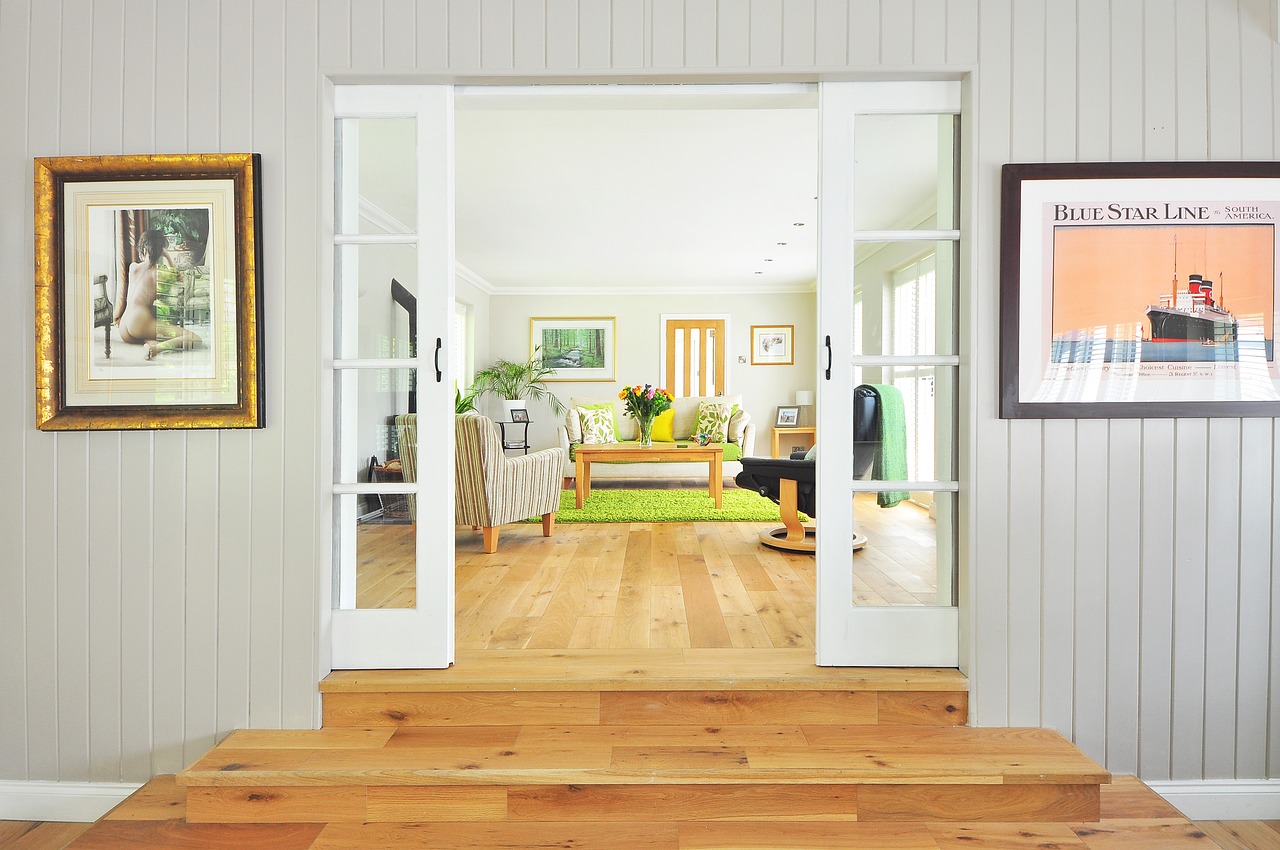Types of floor
[edit] What is the definition of a floor?
According to Approved Document C, a floor is the 'lower horizontal surface of any space in a building, including finishes that are laid as part of the permanent construction.'
A floor typically provides:
- Structural support for the contents of the room, its occupants, and the weight of the floor itself.
- Resistance to the passage of moisture, heat and sound.
- A surface finish which may contribute to the look, feel and acoustics of a space.
- Sometimes it may also form an integral part of the primary structure of the building.
- It may also include elements of building services, such as wiring, pipework, ducting, drainage, lighting, ventilation and so on.
The surface finish of a floor is generally referred to as flooring. For more information see: Flooring.
[edit] What are the most common types of floor?
Very broadly, floor constructions tend to be either solid floors, built up from the ground, or suspended floors, supported by wall structures. There are a very wide range of variations around these basic types.
The choice of which type of floor to select will depend on the intended use of the floor, its location, the structure of the rest of the building, and the required floor finish.
Some of the more common types of floor are described below.
[edit] Solid ground floor
Solid floors tend to require little maintenance and are less prone to movement. They are often built up from the following components:
- Sub-base: Well-compacted building rubble or loose stone-based material.
- Hardcore: A filling material to make the required level, and create a solid base.
- Damp-proof membrane (DPM): An impervious layer such as heavy duty polythene sheeting.
- Concrete bed: Providing a solid level surface.
- Insulation to limit heat transfer with the ground.
- Screed: Usually a sand and cement mix laid to prepare for the installation of a floor covering.
- Flooring finish: Such as carpet, tiles, and so on.
The thicknesses of the layers and their order will depend on the specific use required and the ground conditions.
Some floors will also include underfloor heating and other building services.
[edit] Suspended timber floor
A suspended timber floor is usually constructed using timber joists suspended from bearing walls, which are then covered with either floorboards or some other form of boarding material. The joists are typically laid across the shortest span.
Ventilation may be provided to the void between the floor and the ceiling below by placing air vents or air bricks in the exterior walls, allowing air to travel from one side of the building to the other. This can, however, cause draughts, which can be avoided by installing an airtight breather membrane which will help maintain an airtight seal.
The buildup of the floor may also include insulation depending on its location in the building.
See suspended timber floor for more information.
[edit] Suspended concrete floor
The construction of suspended concrete floors is similar to that of a timber suspended floor but can generally span greater distances, and offers better sound insulation properties.
A simple reinforced concrete flat slab is not usually economical as a suspended floor spanning over 5 m. Other solutions include pre-cast concrete planks or pre-cast concrete beams with concrete blocks laid between them. Voids can be created by beams or ribs, or cast-in holes, to house services, as well as providing support for suspended or attached ceilings.
Larger beams allow a greater span, but require greater overall depth and more complex formwork and reinforcement.
See also: Beam and block.
[edit] Ribbed floor
Ribbed floors use narrow-spaced shallow beams, or ribs, rather than wide-spaced deep beams. Troughed floors are ribbed in only one direction, whereas coffered floors or waffle floors are ribbed in two directions.
Ribbed floors have greater span and load potential per unit weight than flat slab construction.
[edit] Hollow pot floor
This is a ribbed cast in situ floor with permanent formwork in the form of hollow clay or concrete pots. This creates a flat soffit, allowing the direct application of a plaster finish or dry lining. The pot voids can be used to contain small diameter building services within the overall slab depth. The most common form is a one way spanning floor, although two-way spanning is also possible.
[edit] Raised floor
A raised floor (sometimes referred to as an access floor or raised access floor) is a floor created above a solid floor slab, leaving an open void between the two. This void can be used to distribute building services. Raised floors are often found in offices, or in spaces that have a high demand for information and communications infrastructure such as data centres.
See: Raised floor for more information.
[edit] Plenum
Plenums are air compartments or chambers, either above suspended ceilings, in the gap between the ceiling and the floor slab, or below raised floors in the gap between the raised floor and the floor slab. They form part of the ventilation system for the building.
See: Plenum for more information.
[edit] Floating floor
A floating floor is a floor that is not fixed to the layer beneath it. Floating floors are particularly common in refurbishment works, and can be used to help improve the thermal or acoustic insulation of a floor construction.
See: Floating floor for more information.
[edit] Sprung floor
Sprung floors are used for activities such as dance, indoor sports, and multi-purpose halls where specific properties of shock absorption and energy return are desirable to reduce the occurrence of injuries that may result from repeated impact or falls. They can also help maximise performance.
See: Sprung floor for more information.
[edit] Separating floor
The term ‘separating floor’ is generally used to describe a floor designed to restrict the passage of sound between the spaces above and below. It is most commonly used in relation to residential buildings.
See: Separating floor for more information.
[edit] Related articles on Designing Buildings
- Beam and block.
- Compartment floor.
- Floating floor.
- Floor definition.
- Floor insulation.
- Floor loading.
- Flooring defects.
- Floors of the great medieval churches.
- Floor slab.
- Insulation for ground floors.
- Internal floor.
- Plenum.
- Raised floor.
- Separating floor.
- Sistering floor joists.
- Slab.
- Sprung floor.
- Types of flooring.
[edit] External references
- ‘Building Construction Handbook’ (6th ed.), CHUDLEY, R., GREENO, R., Butterworth-Heinemann (2007).
Featured articles and news
The Architectural Technology Awards
The AT Awards 2025 are open for entries!
ECA Blueprint for Electrification
The 'mosaic of interconnected challenges' and how to deliver the UK’s Transition to Clean Power.
Grenfell Tower Principal Contractor Award notice
Tower repair and maintenance contractor announced as demolition contractor.
Passivhaus social homes benefit from heat pump service
Sixteen new homes designed and built to achieve Passivhaus constructed in Dumfries & Galloway.
CABE Publishes Results of 2025 Building Control Survey
Concern over lack of understanding of how roles have changed since the introduction of the BSA 2022.
British Architectural Sculpture 1851-1951
A rich heritage of decorative and figurative sculpture. Book review.
A programme to tackle the lack of diversity.
Independent Building Control review panel
Five members of the newly established, Grenfell Tower Inquiry recommended, panel appointed.
Welsh Recharging Electrical Skills Charter progresses
ECA progressing on the ‘asks’ of the Recharging Electrical Skills Charter at the Senedd in Wales.
A brief history from 1890s to 2020s.
CIOB and CORBON combine forces
To elevate professional standards in Nigeria’s construction industry.
Amendment to the GB Energy Bill welcomed by ECA
Move prevents nationally-owned energy company from investing in solar panels produced by modern slavery.
Gregor Harvie argues that AI is state-sanctioned theft of IP.
Heat pumps, vehicle chargers and heating appliances must be sold with smart functionality.
Experimental AI housing target help for councils
Experimental AI could help councils meet housing targets by digitising records.
New-style degrees set for reformed ARB accreditation
Following the ARB Tomorrow's Architects competency outcomes for Architects.
BSRIA Occupant Wellbeing survey BOW
Occupant satisfaction and wellbeing tool inc. physical environment, indoor facilities, functionality and accessibility.

























Comments
[edit] To make a comment about this article, click 'Add a comment' above. Separate your comments from any existing comments by inserting a horizontal line.